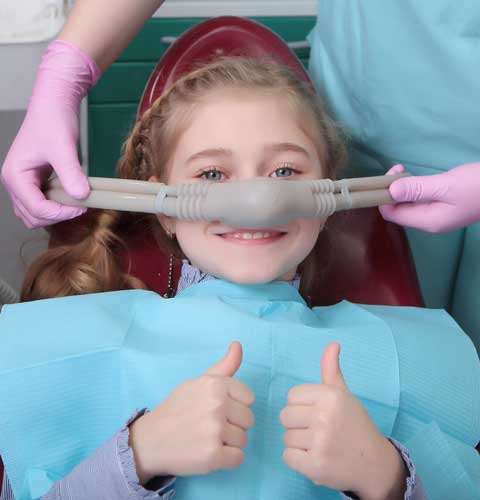Imagine undergoing a complex dental treatment like a root canal, extraction, or oral surgery. When your treatment is complete, you have no recollection of the time it took, the pain, the noise, or the discomfort you were expecting. We are pleased to offer our patients the option of comfortable, safe, and effective sedation dentistry. Patients who benefit from sedation dentistry have:
- A fear or anxiety of being at the dentist
- Anxiety triggered by sounds or smells at the dentist
- A hard time sitting still for long periods of time
- A hard time getting (and staying) numb from anesthetics
What is sedation dentistry?
Sedation dentistry allows your doctor to provide a variety of dental treatments safely and comfortably for patients who experience anxiety when visiting the dentist. There are several benefits to sedation dentistry, including:
- No memory of undergoing the procedure
- No sense of time while under sedation
- No sense of smell or sound
- No fear or anxiety during treatment
Patients who have undergone a procedure using sedation dentistry will tell you it is a simple, relaxing way to experience dentistry.
What is anesthesia dentistry?
When the amount of sedation that is needed impacts a patient's breathing and full consciousness, general anesthesia is required. Pre-cooperative children and patients with severe anxiety and special medical needs require general anesthesia. General anesthesia is administered by anesthesiolgists, dental anesthesiologists and nurse anesthetists. Special anesthesia equipment in an approved facility with support staff such as nurses is required.
I am nervous about being unconscious. What levels of sedation and anesthesia are available to me?
There is no need to be nervous about having sedation dentistry with our practice. You will find that we are both respectful and professional at all times when working to provide care while reducing anxiety.
Sedation and anesthesia is closely regulated by law, and there are four levels of these anxiety treatments when we can provide dental care.
- Mild Sedation — Anxiolysis is the lightest form of sedation dentistry and is often used for patients with mild anxiety, longer procedures, or more complex situations. Mild sedation is usually administered orally. You remain awake or very sleepy throughout the entire procedure and are able to breathe on your own, but you will feel a great sense of relaxation. Patients typically recover from anxiolysis sedation within a few hours after the procedure is complete. Nitrous oxide inhalation (laughing gas) is another form of mild to moderate sedation that results in relaxation during treatment.
- General Anesthesia — Patients having general anesthesia for dental treatment require preoperative examination and histories from their primary physician. Patients are fully asleep for all treatment and patients recover to return home the same day. Full monitors are in place and breathing tubes are used to secure a safe airway. We work with other medical professionals when providing treatment in this way.
How are sedatives administered?
- Inhalation — Nitrous oxide, or laughing gas, is the most frequently used method for easing mild to moderate anxiety. Recovery is quick so you can resume your normal activities immediately.
- Oral — An extremely common technique for dental sedation is oral sedation. It is easy and does not require the use of needles. You will be given a prescription pill which, taken about an hour before your appointment, will have you fully relaxed by the time you arrive at our office.
Nitrous Oxide
Nitrous Oxide, or laughing gas, is the most frequently used method for easing mild to moderate anxiety. Administered through a small disposable scented mask that fits over the nose, it is an effective way to calm anxiety, raise pain threshold, and even make time seem like it's passing quicker than usual. As the gas begins to work, patients will become calm, although they are awake and able to talk with the dentist.
At the end of the appointment, we resume breathing regular oxygen, and all the effects of nitrous oxide will disappear, so normal activities can resume immediately.
It is important to not eat or drink 3-4 hours before having Nitrous Oxide for appointments to avoid an upset stomach. Most times after treatment, a light meal can be eaten right away. Be sure to get specific instructions about eating and chewing at the appointment or beforehand for planning.
Please contact our practice to schedule a consultation, learn more about sedation dentistry, and find out which sedation dentistry method may be right for you.


